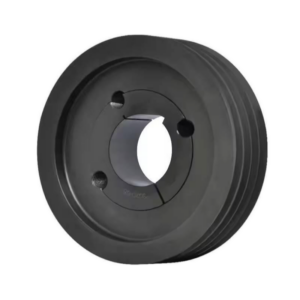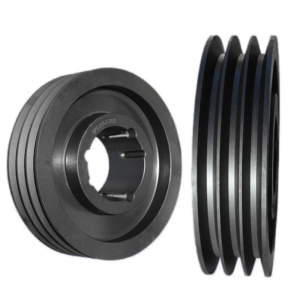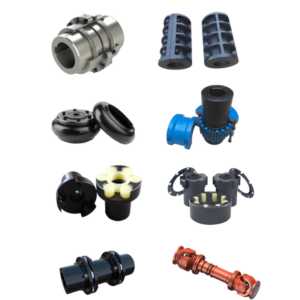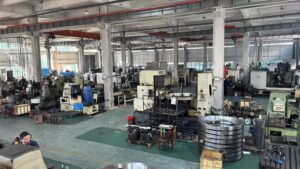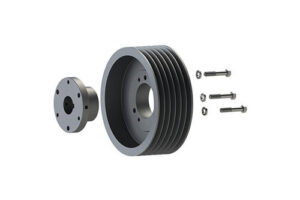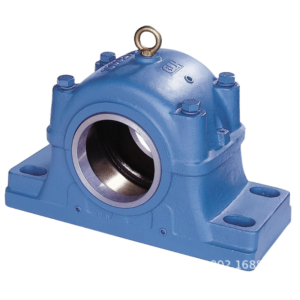When it comes to maintaining the efficiency and longevity of your machinery, belt pulleys play an essential role. These components are responsible for transferring power between different parts of the system, ensuring smooth operations and preventing mechanical failure. However, without proper care, belt pulleys can deteriorate quickly, leading to costly repairs, unplanned downtime, and reduced productivity.
In this post, I’ll share proven maintenance tips to help you extend the lifespan of your belt pulleys, so you can keep your machinery running at peak performance. Let’s dive into the best practices for pulley care, from regular inspections to alignment and lubrication.
Understanding the Role of Belt Pulleys in Machinery Performance
Belt pulleys are the unsung heroes of many industrial systems, transferring motion and power between the driving and driven components. Whether in conveyor belts, motors, or heavy machinery, pulleys ensure everything runs smoothly and efficiently. Understanding their role helps you recognize the importance of maintaining them properly.
Common Causes of Belt Pulley Wear and Tear in Industrial Systems
Belt pulleys endure constant stress and pressure, leading to wear over time. Common causes of pulley damage include misalignment, improper tension, excessive load, and environmental factors like heat or moisture. By identifying these causes, you can take proactive steps to avoid premature pulley failure and keep your systems running longer.
How to Inspect Belt Pulleys for Early Signs of Damage
Regular inspection is key to catching problems early. Look for signs of wear such as cracks, grooves, or uneven surfaces. Check the bearings for signs of overheating or excessive play. Early detection of issues can save your business from costly downtime and help you address problems before they escalate.
The Importance of Proper Alignment in Belt Pulley Systems
Misalignment is one of the most common causes of belt pulley failure. When pulleys are not aligned correctly, they cause uneven stress on the belt, leading to faster wear and tear. Ensure that pulleys are installed according to manufacturer specifications and that they maintain proper alignment throughout their lifespan. Regular checks and adjustments can prevent unnecessary damage and prolong the life of your system.
Best Practices for Lubricating Belt Pulleys to Prevent Excessive Wear
Lubrication is vital for reducing friction and preventing wear. Always use the recommended lubricant for your specific pulley type and ensure it’s applied correctly. Be mindful not to over-lubricate, as this can attract dirt and debris, which can cause additional wear. Regular lubrication schedules will help keep pulleys running smoothly and prevent overheating.
How to Adjust Belt Tension for Optimal Belt Pulley Functionality
Incorrect belt tension can lead to a range of issues, including excessive wear, slippage, or even belt breakage. Too much tension can strain the bearings, while too little can result in inefficient power transfer. It’s essential to regularly check and adjust belt tension to the optimal level for your specific system. A properly tensioned belt ensures maximum efficiency and extends the life of both the belt and pulley.
Signs That Your Belt Pulley Needs Replacement: When to Act
Even with regular maintenance, there comes a time when a belt pulley will need replacing. Common signs include excessive wear, cracks, deformation, or unusual noise. If a pulley is damaged beyond repair, it can cause operational failure or even damage other components. Replacing worn-out pulleys before they fail can prevent expensive repairs and keep your machinery in top condition.
The Impact of Environmental Factors on Belt Pulley Lifespan
Environmental conditions such as temperature fluctuations, humidity, and exposure to dust or chemicals can significantly impact the lifespan of your belt pulleys. High heat can cause pulleys to expand and wear down faster, while excessive moisture can lead to rust and corrosion. Be aware of the environment your equipment operates in and consider additional protective measures, such as covers or sealing, to minimize the impact of these factors.
How Regular Cleaning Can Extend the Life of Your Belt Pulley System
Dirt and debris buildup on pulleys can cause friction, leading to faster wear and potential damage. Cleaning your pulleys regularly helps prevent debris from interfering with their function and keeps the system running efficiently. Use a soft brush and cloth to wipe away dust and grime, and avoid harsh chemicals that could damage the pulley material.
Cost-Effective Strategies for Maintaining Belt Pulleys in Industrial Operations
Maintaining belt pulleys doesn’t have to break the bank. Implementing a regular maintenance schedule, investing in quality lubrication, and training staff to spot early signs of wear are all cost-effective strategies to extend the life of your pulleys. Proactive maintenance is far more affordable than dealing with the costs of replacing broken pulleys or repairing damaged machinery.
Conclusion
Belt pulley maintenance is often overlooked, but it’s essential for the smooth and efficient operation of your machinery. By understanding the role of pulleys, performing regular inspections, ensuring proper alignment and lubrication, and keeping your pulleys clean, you can significantly extend their lifespan and prevent costly downtime. Remember, a little maintenance goes a long way in keeping your systems running efficiently and ensuring your business operates at its best.

